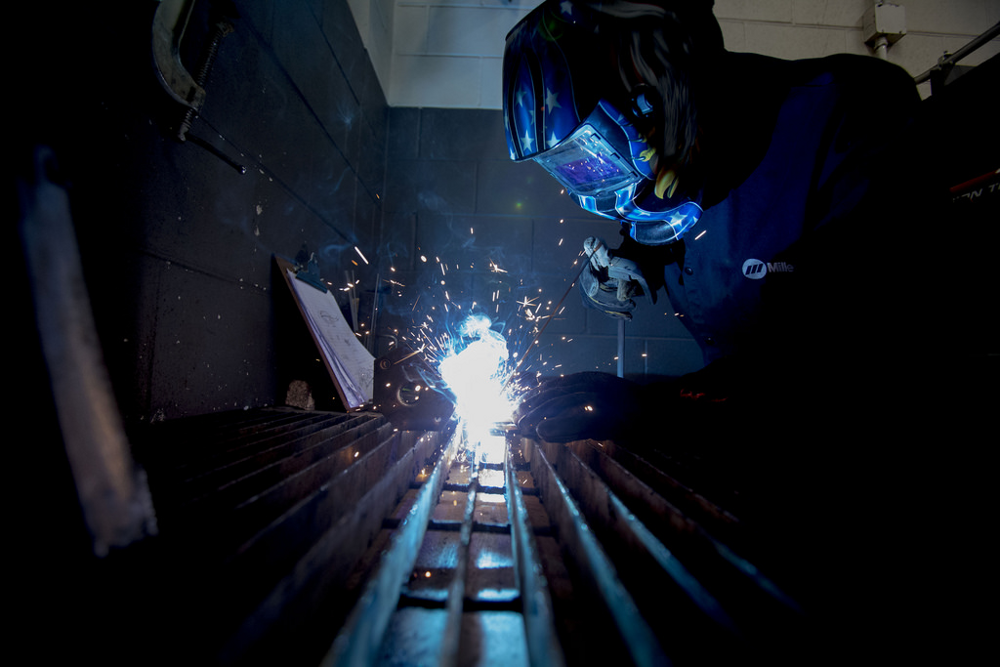![[Source: Flickr ]](https://fabbaloo.com/wp-content/uploads/2020/05/Welding-Image1_img_5eb0a0c331331.png)
Welding is a critical process in the manufacturing and development of many essential fabricated products.
In fact, more than 50% of U.S. products require welding, including automobiles, trucks and heavy equipment. Welding is a fabrication process which utilizes heat to melt and bind two or more pieces of material together. Although this process may sound simple, there are actually many different welding techniques which all require extensive training and hours for welders to master.
The rise of additive manufacturing has led to major players in the industry, namely Lincoln Electric and Miller Electric, investing into the exploration of incorporating 3D printing into their product offerings.
The Research & Development Tax Credit
Enacted in 1981, the now permanent Federal Research and Development (R&D) Tax Credit allows a credit that typically ranges from 4%-7% of eligible spending for new and improved products and processes. Qualified research must meet the following four criteria:
-
New or improved products, processes, or software
-
Technological in nature
-
Elimination of uncertainty
-
Process of experimentation
Eligible costs include employee wages, cost of supplies consumed in the R&D process, cost of pre-production testing, US contract research expenses, and certain costs associated with developing a patent.
Lincoln Electric
With over 120 years in the industry, it makes sense that Lincoln Electric’s company motto is “The Welding Experts”. Lincoln is a leading global manufacturer of welding products, arc welding equipment, welding consumables and robotic welding systems.
In 2016, Lincoln Electric was awarded funding for a joint 3D printing project. Along with Lincoln, the team comprised Caterpillar, GKN Aerospace, IPG Photonics, ITAMCO, Oak Ridge National Lab, United Technologies and the University of Tennessee. The project funding awarded to the group was from America Makes, a public-private partnership which serves as a collaborative partner in the in research and development of 3D printing technology and innovation. The project was described as a “multi year journey advancing robotic additive manufacturing”.
![Joule Printer [Source: Digital Alloys ]](https://fabbaloo.com/wp-content/uploads/2020/05/Welding-Image2_img_5eb0a0c39d9a2.png)
Lincoln Electric, as well as other well-known companies such as Boeing, HorizonX Ventures, G20 Ventures, and Khosla Ventures, invested $12.9 million in Digital Alloys in 2018. Digital Alloys is an additive manufacturing company specializing in the manufacturing of hard metal parts. In addition to the 2016 collaborative project, this joint investment highlights Lincoln Electric’s commitment to and interest in the 3D printing industry.
Miller Electric (A Division of ITW)
Beginning in 1929 as a one-man operation, Miller Electric has grown from a small shop selling products in Wisconsin to being a leading manufacturer of welding and cutting equipment selling and distributing products across the world.
![PerformArc [Source: Miller Electric ]](https://fabbaloo.com/wp-content/uploads/2020/05/Welding-Image3_img_5eb0a0c3d6709.png)
Miller Electric created a line of additive manufacturing welding solutions in 2016 called PerformArc. The PerformArc products are up to ten times faster than traditional welding processes, have lower distortion rates and create less consumable waste. This product line has gained traction in the industry since its inception, growing to four products, each with different trim levels that serve different needs.
Laser Hot Wire Cladding Systems
Both Lincoln Electric and Miller Electric are developing laser hot wire cladding systems. Laser hot wire cladding is a welding process that encompasses a preheated wire and laser beam. This process has been developed to replace the clad/hardface welding process. Laser hot wire cladding greatly reduces dilution while increasing speed. The great potential of laser hot wire cladding is that the process can be used to repair and refurbish damaged or worn high-value parts. The fact that two competitors are both investing in the same additive manufacturing technology highlights the significance of laser hot wire cladding for the welding industry.
Conclusion
The welding industry plays a role in the development of many industrial and consumer goods used and enjoyed around the globe. 3D printing technologies being developed in the welding industry will soon enable manufacturers to develop components faster and at less cost than in the recent past. Companies that are engaged in the development of these technologies or the integration of these technologies into their businesses can use the federal Research and Development Tax Credit to offset their development costs and help fund their future R&D activities.











The 3D printing industry is fast-changing. Sometimes taking a step back, though, is necessary to grasp the bigger picture.